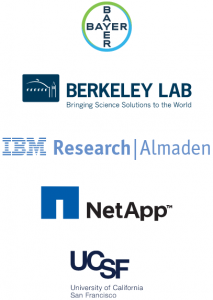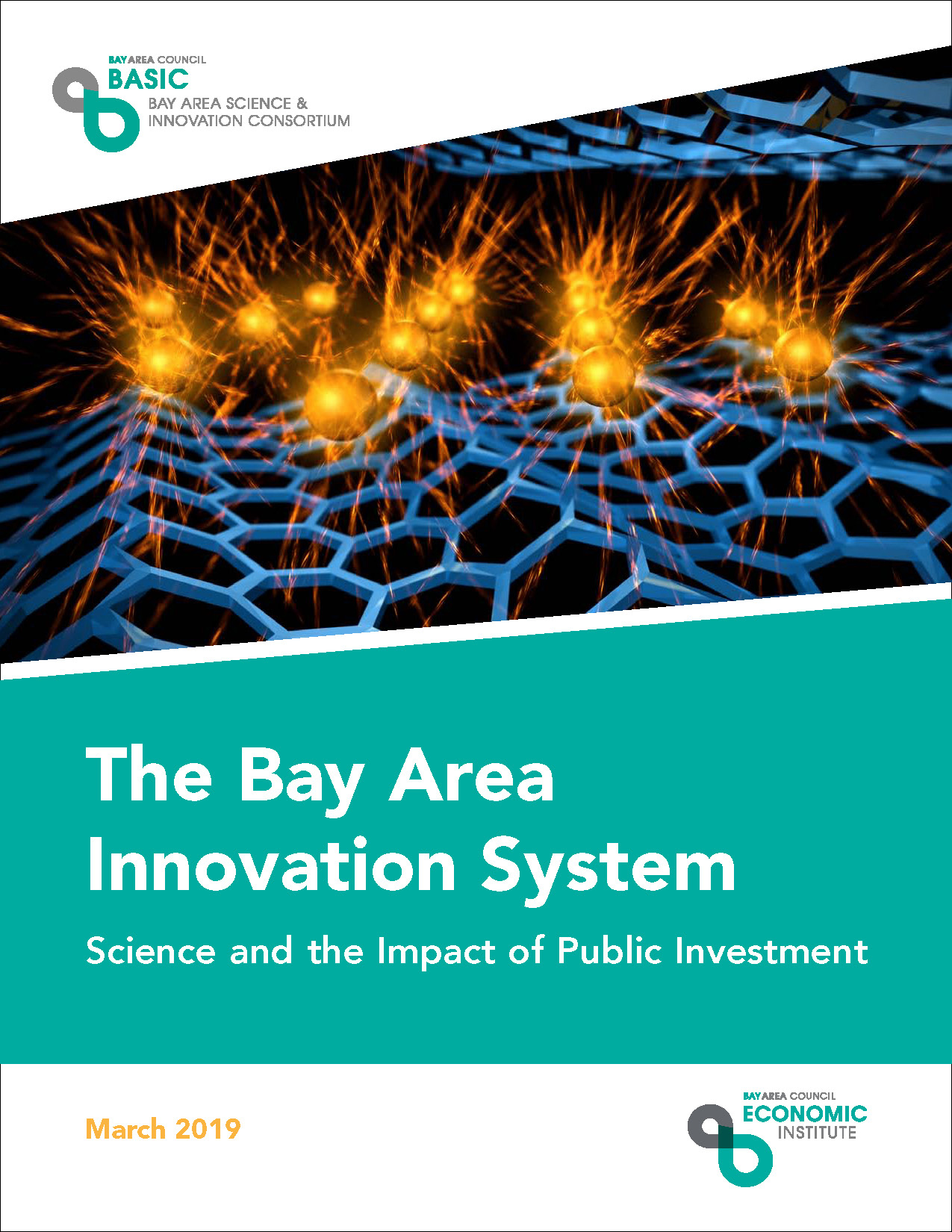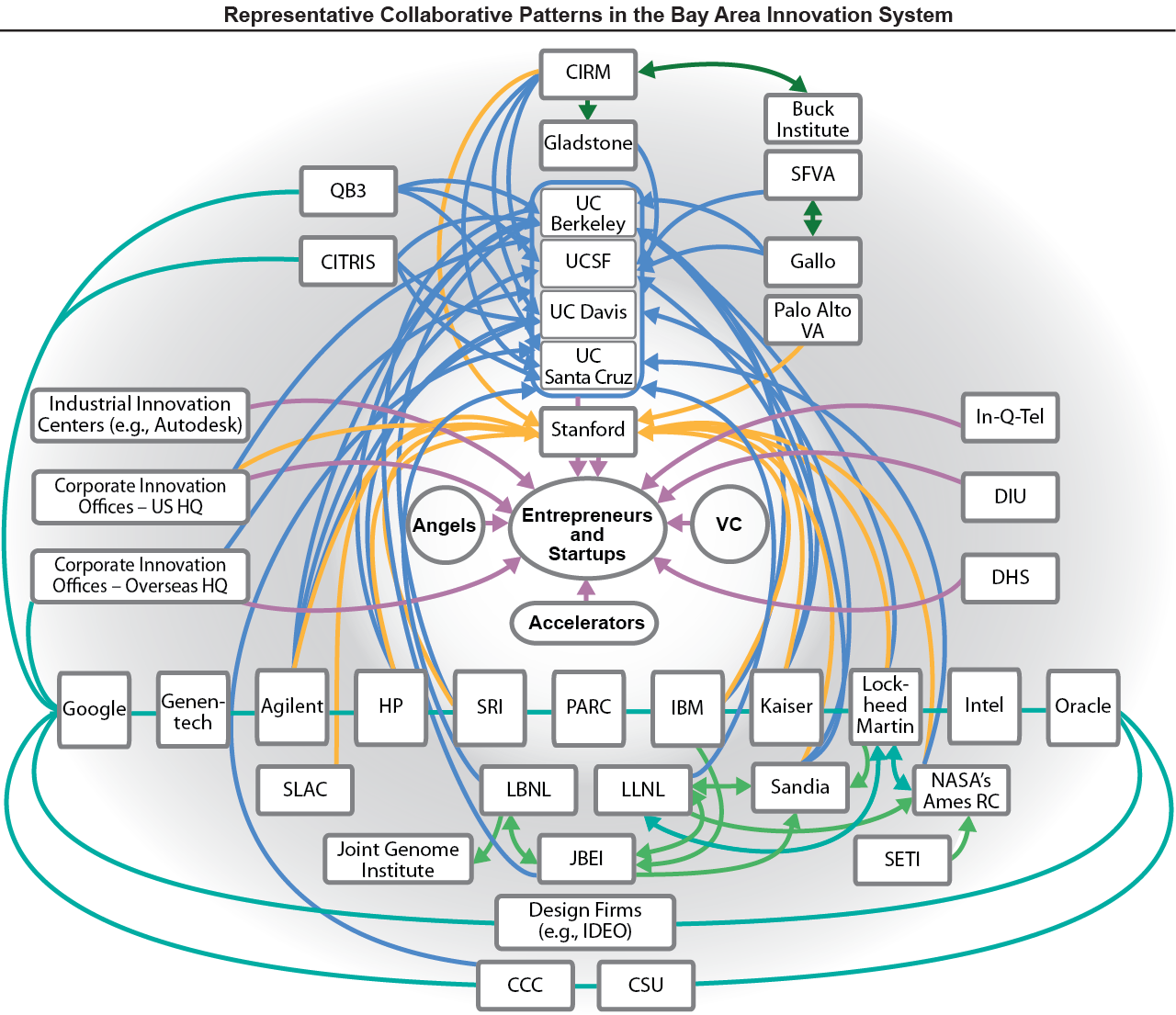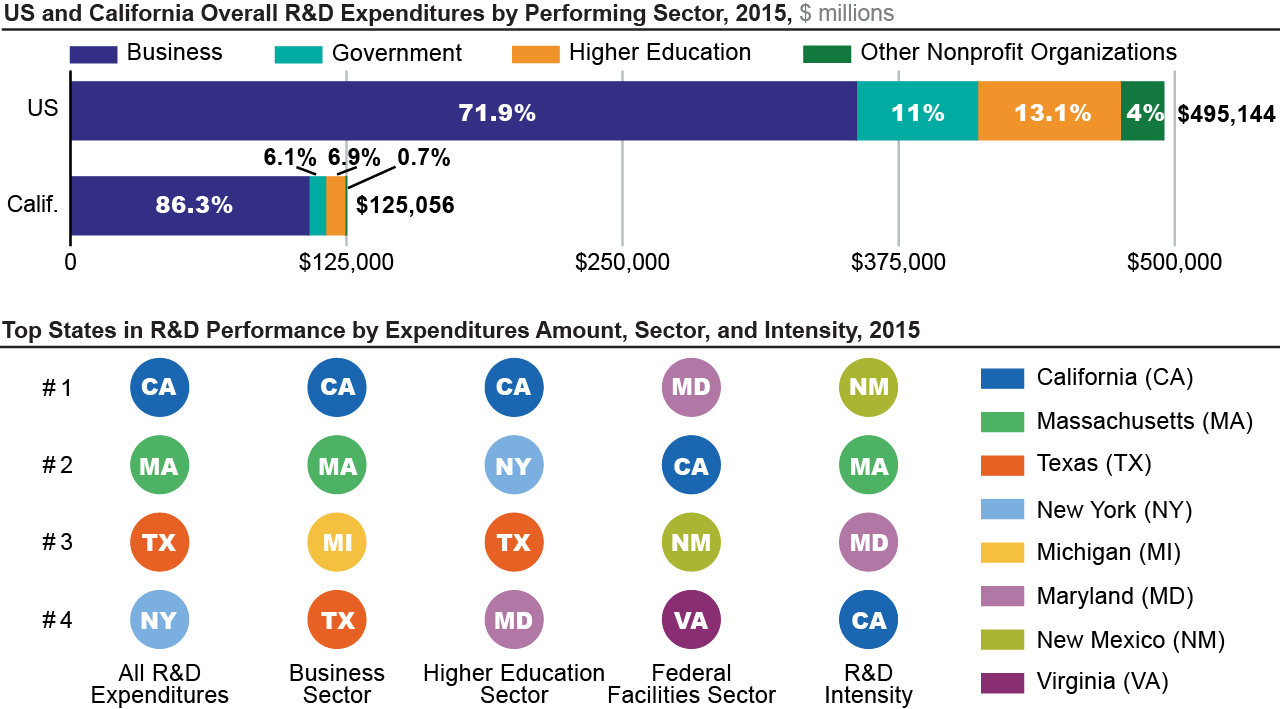The Bay Area’s already considerable impact on the national and global economies is continuing to grow. Over the last six years, since BASIC’s first mapping of the region’s innovation ecosystem, we have seen the rapid acceleration of emerging technologies and their applications, including machine learning, personalized medicine, autonomous vehicles, cleantech, and virtual reality, to name only a few. These technologies are profoundly impacting the future of business and how we live. As Silicon Valley’s reach expands to the farthest corners of the globe, hundreds of millions more people will use and benefit from the technology and services that Bay Area businesses generate.
While the key components identified in BASIC’s last report—universities, federal labs, independent labs, joint research facilities, corporate labs, incubators, accelerators, and venture investment—continue to provide the system’s base, new players such as industrial innovatiion centers have been added. This “innovation cloud” has proven its resilience, repurposing itself again and again with dynamic, non-linear developments across the technology sector.







